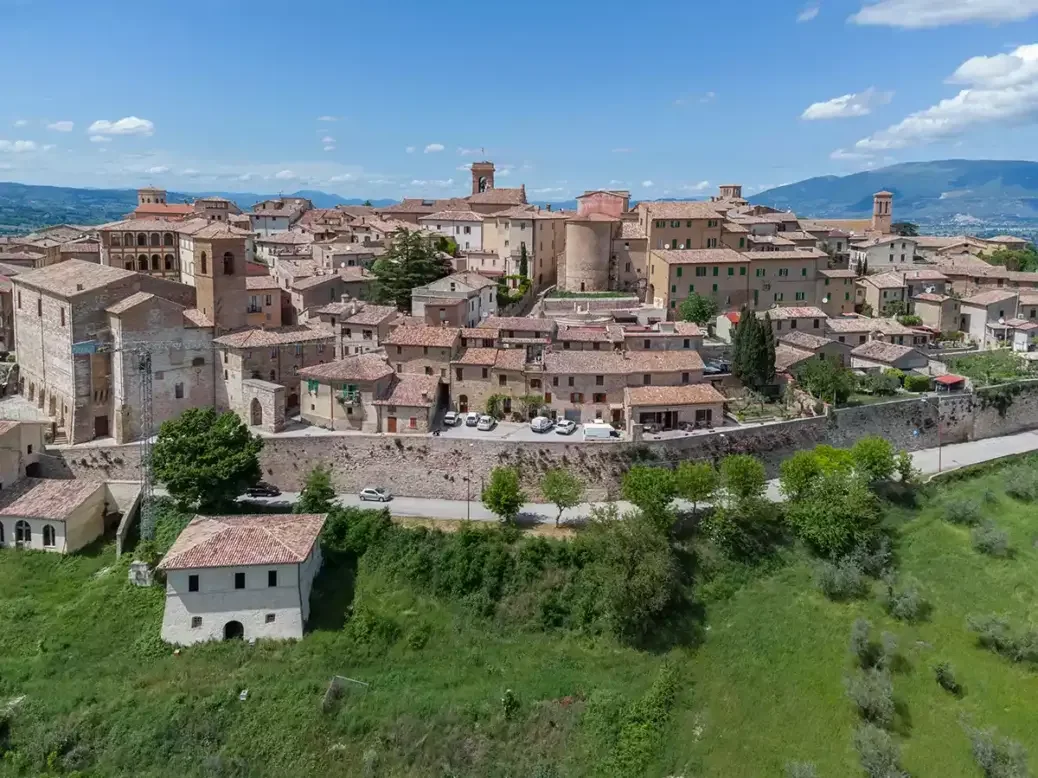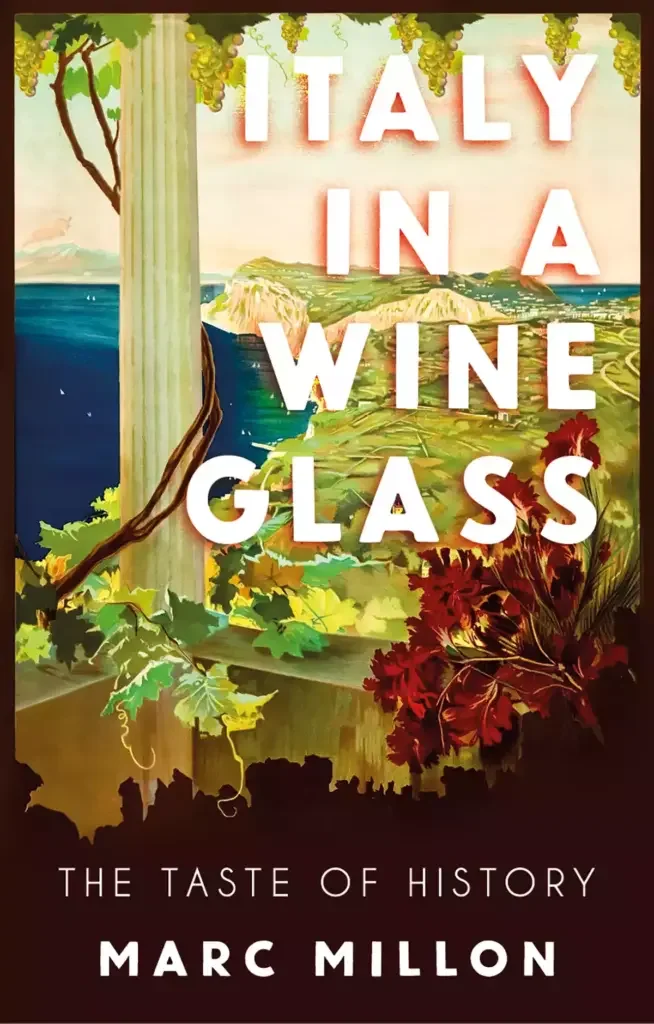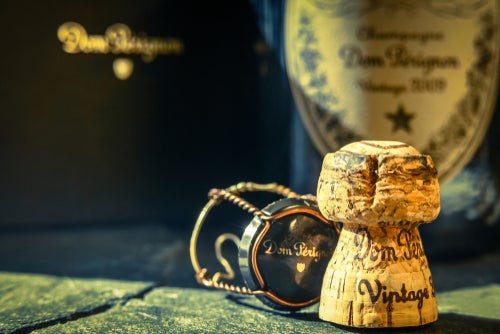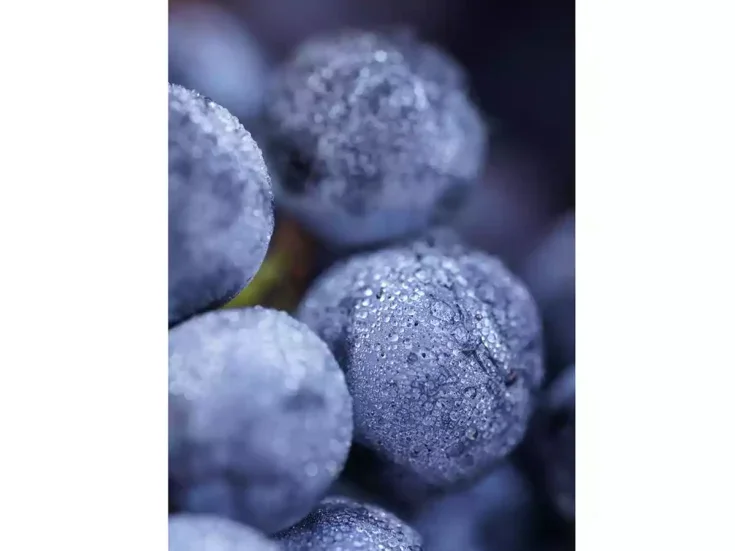
Andrew Jefford reviews Italy in a Wine Glass: The Taste of History by Marc Millon.
Here’s a rarity: a wine book that rewards reading from beginning to end. I gulped it down, and I finished wanting more.
Marc Millon is a writer, journalist, educator, podcast host, and tour guide, based in Devon, England. Italy is his specialty (though not an exclusive one—he and his wife Kim have published books on the French and European wine scene, too). Italy in a Wine Glass, the fruit of a West Country Covid lockdown, is both fascinating and original.
Italy’s wine scene is, I think, incomprehensible in the primary sense of the word; it’s so vast, so complex, so multithreaded, and so intricately layered as to defeat understanding. The world has no other national wine culture to match this one for geographical ubiquity, or for diversity in terms of biotope, vine genetics, and local culture. Wine is always there, staining and scenting the painstakingly assembled national fabric—from sharp, shadowed Valle d’Aosta, to glimmering Pantelleria. Set foot in Italy, and whatever we think we know about Italian wine quickly finds its limits. Our knowledge expires; there’s always more; surprises lie around every corner. Any book attempting to be comprehensive—about denominazioni, about grape varieties, about terroir, about producers—is thus almost doomed to end in the thickets, as a gristly work of reference. Works of reference may appeal and prove useful, of course, but no one but the obsessed will find relish on every page. A readable book on this subject needs a selection mechanism of some sort. Millon’s highly effective mechanism is to illuminate 91 Italian wines of gratifying and often fascinating heterogeneity in the light of Italy’s history. That, of course, touches on Phoenician, Etruscan, Greek, and Roman history, as well as the histories of the lost nations and empires whose gene segments constitute much of the DNA of present-day Italy—Frankish, Lombard, Carolingian, Norman, Sicilian (sometimes doubly Sicilian), Venetian, Papal, Holy Roman, Napoleonic, Savoyard. Few nations have been assembled from so many once-autonomous units.
In practice, the cumulonimbus of Italian history tends to upwell and anvil through our minds as much via remembered artistic masterpieces as through detail and dates: the grace of a Lippi Annunciation, Monteverdi’s sumptuous polyphony for St Mark’s holy days, Leonardo’s Vitruvian Man, the dramatic perfection of Caravaggio’s Calling of St Matthew, Canova’s melting marble limbs, Verdi’s “Va, Pensiero.” We half-know so much about Italy, all of us, but—as with her wines—we know nothing entirely; our knowledge is scattered tesserae, spilled out across the floor. What Millon has done is skillfully position the tesserae, both factual and artistic, into a mouthwatering mosaic.

A wonderfully enjoyable book
Italy in a Wine Glass is roughly chronological, beginning with Homer’s Polyphemus and the Greek colony of Selinunte on Sicily and ending with Falcone’s and Borsellino’s struggle against the Mafia, with climate change and with gene editing. Chronological—but unsystematic. It’s a magpie selection of the fascinating, the little known, the gastronomically relevant: Pliny the Elder, on the vine’s predilection for place; the Lombards’ “cult of the pig”; Frederick II, Lo Stupor Mundi, with his Puglian octagonal refuge and his naming of Montefalco after his beloved birds of prey; the slow and improbable birth of Venice, dredged from sandbanks and mudflats by fish-eaters who “lived like birds” in their watery nests of osier and wattle; the various fruits of Spanish influence in Italy—soleras in Marsala, flor wines on Sardinia; Napoleonic chaos; Trieste’s coffee story; Tuscany’s Iron Baron; Fontanafredda’s romantic origins; the lovable Pellegrino Artusi (Italy’s Mr Beeton); the tinned-tomato legacy of the Asti hills; the postwar Italian constitution’s embrace of cooperation “as a form of mutual aid devoid of all private speculative intent.”
I was shocked to find I knew so little about the wines Millon serves up to accompany his light-footed historical narrative, and I would love to have the chance to taste them all. But how? A few are celebrated and acclaimed; others historically significant; but most are obscure, authentic, curious—with a story to tell. Exquisitely Italian, in other words, meaning that their position in a culture (both historical and gastronomic) is more important, finally, than assessed quality, than the drumbeat of commerce. Millon’s gratifyingly unmodish tasting descriptions whet the appetite without straining credulity.
Millon writes fluidly; he tells his stories with carefully marshalled assurance. There’s significant scholarship here, worn with modesty; feast on the bibliography if you wish. I hope this wonderfully enjoyable book inspires others. We need more wine books that reward reading from beginning to end.
Italy in a Wine Glass: The Taste of History
Marc Millon
Published by Melville House (US), Hurst & Company (UK) / US edition: 336 pages; hardback $38.99, Kindle $18.99 / UK edition: 368 pages; hardback £20, Kindle £14.99






